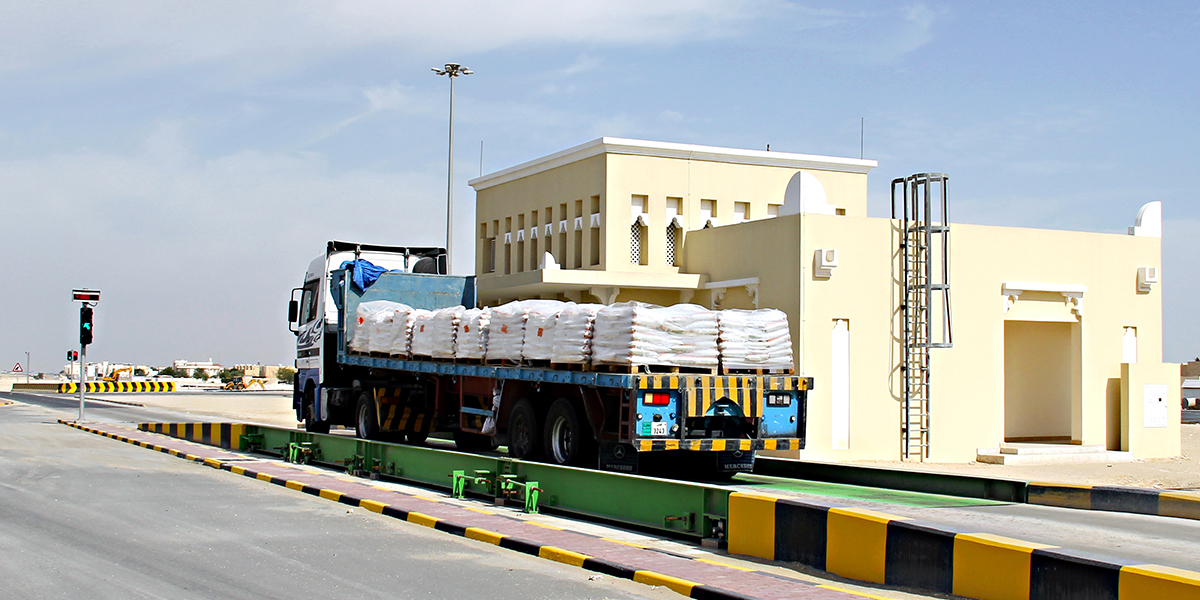
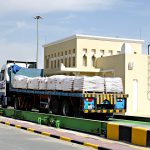
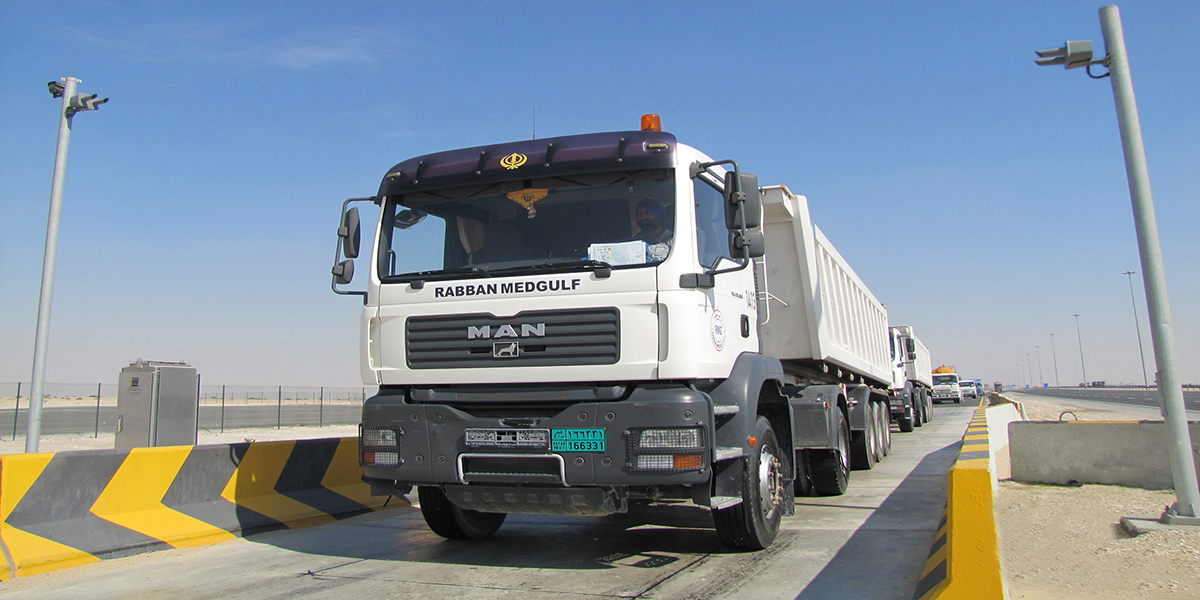
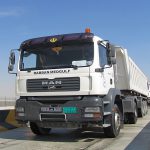
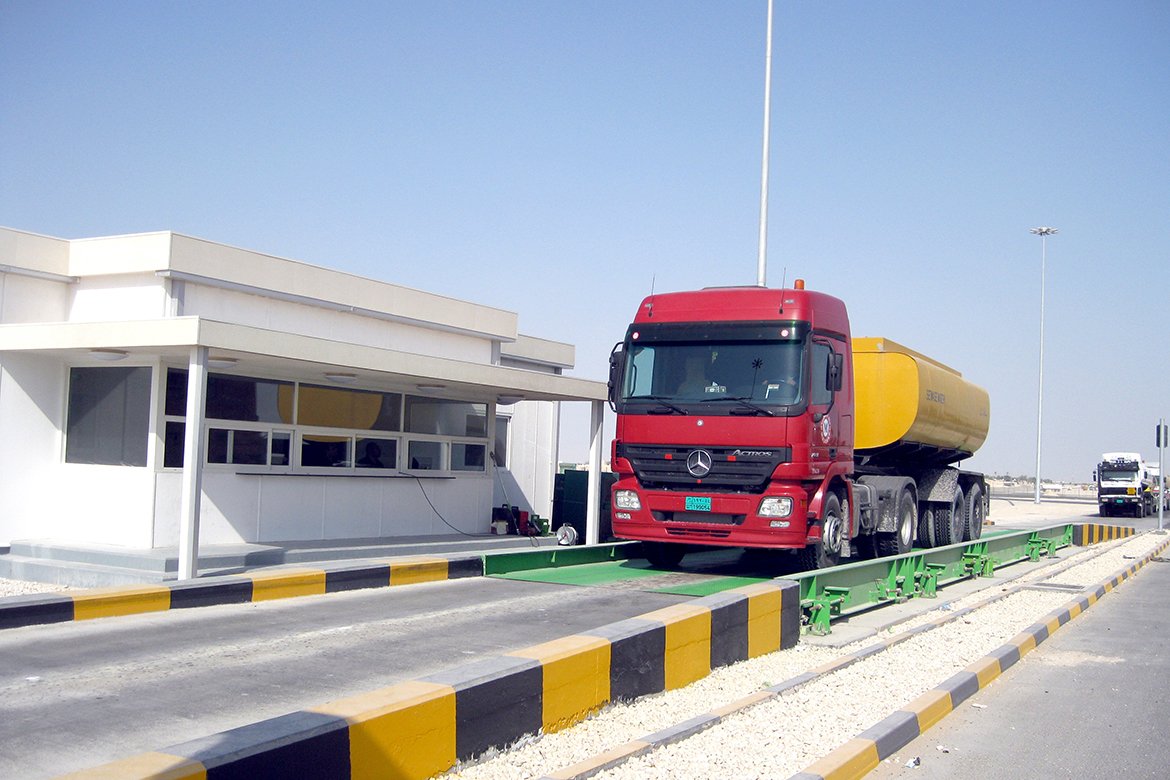
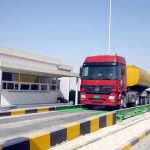
Projects - Truck Scales & Weigh Stations
Truck Scales / Weighbridges
Traffic Tech installed its first truck scale (weighbridge) in 1990 and to date have an installed base of over 100 weighbridges & heavy duty industrial scales for different applications.
Below is a partial list of clients:
Client | No. of Scales |
|---|---|
Public Works Authority (PWA) Ashghal – Qatar | 23 |
Qatar Fuel Additives Co. (QAFAC) | 3 |
Qatar Steel Co. (QASCO) | 3 |
Qatar Aluminum Limited (QATALUM) | 1 |
Halliburton Worldwide Limited – Oman | 2 |
Qatar Chemical Company Ltd (QCHEM) | 1 |
Complete Truck Weigh Stations
Traffic Tech was awarded 3 contracts by the Qatar Public Works Authority to design and build a total of 23 truck weigh stations that will constitute Qatar’s national truck weigh enforcement system. To date, Traffic Tech has completed the installation of 11 truck weigh stations and has also been contracted to operate and maintain them.
Completed and currently in operation are as follows:
- Salwa International Highway – 6 nos.
- North Road – 3 nos.
- Dukhan Highway – 2 no.
Each Truck Weigh Station consists of four major parts:
1. Data Collection Station on the Mainline
Mainline sensors cover all four lanes in one direction of the freeway. These sensors are used for permanent traffic data collection, an ITS component that forms part of the highway’s road asset management system.
This stage consists of quartz WIM sensors installed in the two right most lanes (lanes 1 & 2), piezoelectric WIM sensors installed in the two left most lanes (lanes 3 & 4) and inductive loop sensors installed in all four lanes. These mainline sensors collect data of all passing vehicles. Data collected includes axle weight, gross vehicle weight, vehicle speed, spacing between adjacent axles, vehicle length, vehicle class, lane number, date & time, and vehicle record number.
2. Ramp Screening for all Trucks Entering the Station
All trucks should enter the weigh station if it is open. An electronic (OPEN/CLOSED) sign located before the entrance of the station will indicate if trucks should report. If the station is open and some trucks choose not to enter the station, they will be detected later on at the bypass lanes.
An overview camera allows the operator to see if there is a congestion at the entrance of the station. In case of congestion, the operator can set the electronic sign to CLOSED until the congestion is cleared.
The ramp is a single lane equipped with inductive loop sensors, quartz WIM sensors, over-height sensor and a camera. A snapshot of each truck will be taken upon hitting the sensors and each picture will be associated to its corresponding truck record. Data collected in the ramp screening include axle weights, gross vehicle weight, truck speed, spacing between adjacent axles, total truck length, truck class, lane number, date & time, vehicle record number, over weight status, over height status, and truck image. The data obtained from the ramp screening will be sent to the operator’s workstation for live monitoring and will also be saved for future use to generate reports.
Based on a truck’s measurement and the data captured, trucks will be automatically classified and compared to a compliance table. If a truck exceeds any of the thresholds for its class, the traffic lights will automatically direct the truck to report to the static scale, otherwise, the truck will be directed to leave the station without any further delay.
If some suspected trucks choose not to report to the static scale for weight verification after being directed to, they will be detected and will appear in the operator’s software as a running violator.
3. Multi-platform Static Scale for Weight Verification
The static scale comes after the ramp screening scale. Through static weighing, it verifies overload violation of those identified in the ramp screening. A traffic light located after the static scale will automatically direct confirmed violators to the parking lot for issuance of a violation ticket. Otherwise, those that have no violation will be permitted to exit the station. If a truck choose to exit after being directed to the parking lot, a snapshot will be taken by a camera located at the exit lane and will appear in the operator’s software as a running violator.
4. Bypass Lanes for Trucks that Bypass the Weigh Station
Bypass lanes detect trucks that didn’t enter while the station is OPEN. If the station is CLOSED, bypass lanes are automatically diabled.
This stage consists of piezoelectric and inductive loop sensors installed in all four lanes of the main highway in front of the weigh station. If the station is open and a truck chooses not to enter the ramp screening, it will be detected and a snapshot will be taken by high speed image capturing cameras. These trucks will appear in the operator’s software and will be stored in the system to be recalled any time for obtaining reports.
Award Winning Project - Salwa Truck Weigh Stations
The Salwa Truck Weigh Stations was built as part of the Salwa Highway ITS project. The system aims to increase traffic safety and reduce road maintenance cost through prevention of accidents and road damage caused by overloaded vehicles. During the construction of the fixed weigh stations, Traffic Tech also operated portable/mobile enforcement scales in cooperation with the Qatar Police to enforce legal truck weights, and start educating truck drivers and owners on the importance of adhering to the legal limits.
The project won the Award for Infrastructure Project for Improving Road Safety at the Gulf Traffic 2011 Awards in Dubai.
Truck Weigh Stations
Traffic Tech’s Salwa Truck Weigh Stations project in Qatar has received a prestigious award:
The Traffic Tech Group’s Salwa Truck Weigh Stations Project wins the Infrastructure Project for Improving Road Safety Award in the recently concluded Gulf Traffic 2011 Awards in Dubai.




